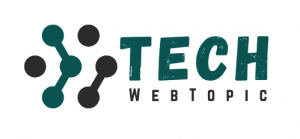The Salesforce cloud services it has to offer have been continuously updated to match the changing business needs. Among the significant modifications, one must bring in Salesforce Community Cloud rebranding into Salesforce Experience Cloud. This change is indicative of a broader vision where Salesforce would like to provide to the business a platform that does not simply support the process of building communities with their customers but can also enhance the degree of collaboration and interaction within the organization itself.
With the rise in importance of digital experiences as a business growth driver, it is crucial to comprehend the distinctions and parallels between Salesforce Community Cloud and Experience Cloud when organizations consider adopting Salesforce as a method to facilitate streamlined customer interactions, employee collaboration and partner engagements.
In the blog, we will explore major differences and capabilities that make the two offerings different and why Salesforce undertook this strategic change.
What Is Salesforce Community Cloud and Salesforce Experience Cloud?
What is Salesforce Community Cloud?
Salesforce Community Cloud was created to assist corporations in developing an external community of collaboration and interaction with customers, partners, and employees. Key features included:
- Customer Engagement: Build customer portals enabling customers to get customer support and resources.
- Partner Collaboration: Provide partners with access to portals to collaborate, deploy resources and performance smart.
- Self-Service Capabilities: Knowledge bases and forums should enable customers to solve their issues by themselves.
- Case management: It is also integrated with Salesforce CRM such that tracking of the case and customer support may be achieved
On the one hand, Community Cloud was efficient, but on the other hand, it was less customizable, personalized, and integrated than Experience Cloud.
What Salesforce Experience Cloud?
Salesforce Experience Cloud represents an enriched version of Community Cloud, which has an extended set of features to collaborate on (internal and external). Key features include:
- External and internal Collaboration: Helps the connection of the employees, partners and customers under one platform.
- Personalized Experience: Applies Salesforce Einstein AI to offer personalized experiences and recommendations
- Advanced Customization: Provides no-code easy design customization, including Experience Builder.
- Smooth Interconnection: Intensive connection with Salesforce CRM and with other systems.
- AI Insights: Uses Salesforce analytics to create real-time insights to maximize user interaction.
Experience Cloud allows businesses to develop cohesive digital experiences with different stakeholders, so it is more flexible than Community Cloud.
Key Features of Community Cloud & Experience Cloud
Key Features of Community Cloud
The Salesforce Community Cloud was aimed at delivering a platform to business, enabling the creation of external-facing communities, linking customers, partners, and employees. It had some important functions that were:
External Collaboration:
- It is designed with the focus of developing communities involving external stakeholders such as customers and partners.
- Its functionality was based on features such as customer support forums, partner collaboration spaces, and discussion groups.
Customization:
- It gave basic branding and theming options, but the flexibility was not as much as Experience Cloud.
Case Management:
- Combined with Salesforce CRM to give advanced case management capabilities to customer service teams, so that it is simple to monitor and solve problems that are posted by the community members.
Self-Service Capabilities:
- Give empowered customers and partners the option of self-service portals to get an answer to their questions instead of relying on the support team.
Access Control and Security:
- Provided strong access and security controls to control who could access the community so that information that was sensitive could be shared with the appropriate audience.
Key Features of Experience Cloud
Salesforce Experience Cloud is based on Community Cloud, but it enhances its capabilities and gives additional features to support both external and internal collaboration. The main characteristics of Experience Cloud are these:
Broader Collaboration:
- In contrast to Community Cloud, Experience Cloud is meant to enable external and internal cooperation. It does not only facilitate customer and partner engagement, but also internal collaboration among employees.
- Businesses are now able to establish individual workspaces for themselves, their customers, and partners under a single platform.
Enhanced Personalization:
- Experience Cloud relies on Salesforce Einstein to provide personal suggestions, content and experiences, based on user behavior and preferences
- It enables companies to develop extremely specific, pertinent experiences to users based on their previous interactions and actions in the community.
High degree of customization, Experience Builder:
- Among the most impressive aspects of Experience Cloud is Experience Builder, which is a potent framework that enables companies to design and personalize the design and user interface of their communities through a drag and drop interface.
- The tool allows businesses to completely customize layouts, branding, and navigation, without the use of code, a major constraint in Community Cloud.
Connection with third Party applications:
- Experience Cloud is highly integrated with third parties and legacy systems, and therefore, it enables seamless integrations.
- Whether it is eCommerce tools, customer care tools, or marketing automation tools, companies can integrate a wide range of applications in an attempt at providing a more interconnected and integrated experience
Data-Driven Insights:
- The Experience Cloud is operated in collaboration with Salesforce CRM and analytics that would provide both deep data insight..
- Businesses are able to track the activity, understand how well their community works, and continuously streamline the user experience using real-time information.
Security & Access Control:
- Experience Cloud has better security and access control capabilities, which facilitate businesses to control in and out user permissions more effectively.
- It also facilitates enhanced authentication procedures to make certain that confidential data is encrypted.
Salesforce Community Cloud Becomes Experience Cloud Now
- Salesforce Community Cloud was renamed in 2022 as Experience Cloud, as the platform has become more functional.
- The move was part of Salesforce’s overall approach to not be merely a community platform, with Experience Cloud being a full-scale digital experience platform (DXP).
- This upgrade underlines how the platform can support a very broad spectrum of digital experiences, both customer and internal team member collaboration spaces, all on a single system.
- Community Cloud was mainly aimed at customer interactions and the ability to partner with external communities.
- Experience Cloud expands the opportunities so that it can support not only external interaction but also internal processes.
- This rebranding assists companies to match up the current digital experience approaches, investing in a more profound involvement, automation, and a richer user experience.
Significant Distinctions Between Salesforce Community Cloud vs Experience Cloud
Salesforce Community Cloud and Experience Cloud do not just exist in appearance. Here’s a breakdown
Scope of Use:
- Community Cloud is a solution mainly created to serve external-facing communities, with its emphasis placed on customer service, partner collaboration, and user interaction.
- Experience Cloud, on the contrary, also has internal collaboration features; it serves a wider variety of business requirements.
Customization and Branding:
- Experience Cloud has much more advanced customization, such as access to advanced branding features such as Experience Builder.
- This software enables companies to design the look, themes, and navigation of their community without the use of code.
- In this respect Community Cloud was less fortunate.
AI-Powered Personalization:
- Experience Cloud is an integration of Salesforce Einstein, which is based on data to make recommendations and personalize content.
- This was not an aspect of the older Community Cloud platform.
Integration with External Tools:
- The Experience Cloud has also recently added better third-party tool integration features, which provide companies with more opportunities on how they connect their digital experience with other elements of their technology stack.
- These will involve greater support for marketing automation, customer support, and eCommerce.
Why Did Salesforce Make This Shift?
- The decision of Salesforce to replace Community Cloud with Experience Cloud was aimed at addressing the needs of the present digitization shift
- These are the days; businesses strive to create more involved and in-depth experiences for various audiences, including partners, customers and employees. The rebranding of Salesforce was determined..
- Experience Cloud as the platform that can meet all these demands by providing improved features like AI-powered personalization, smooth integrations, and cutting-edge engagement tools.
Conclusion
Although Salesforce Community Cloud and Experience Cloud are highly similar, the latter is an innovation of the former. Experience Cloud has extended the reach of Salesforce with an entire spectrum of options available to companies to create tailored, immersive, and AI-driven experiences for everyone involved.
Besides renaming, the rebranding will make Salesforce platform up to date with the demands of the digital age. Whatever the case, Experience Cloud provides the tools needed to enhance customer experience, speed up teamwork, and work harder, whether you are a new or existing Salesforce customer.
The shift in the product line of Salesforce shows that the company remains committed to helping companies enhance internal operations, build significant relationships, and enhance customer experience in the same unified platform.


